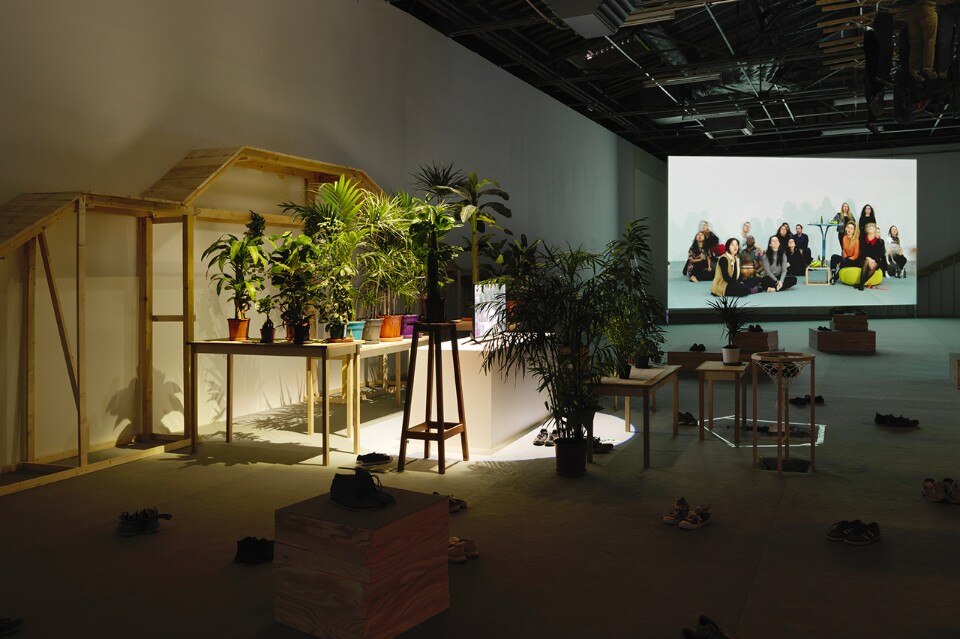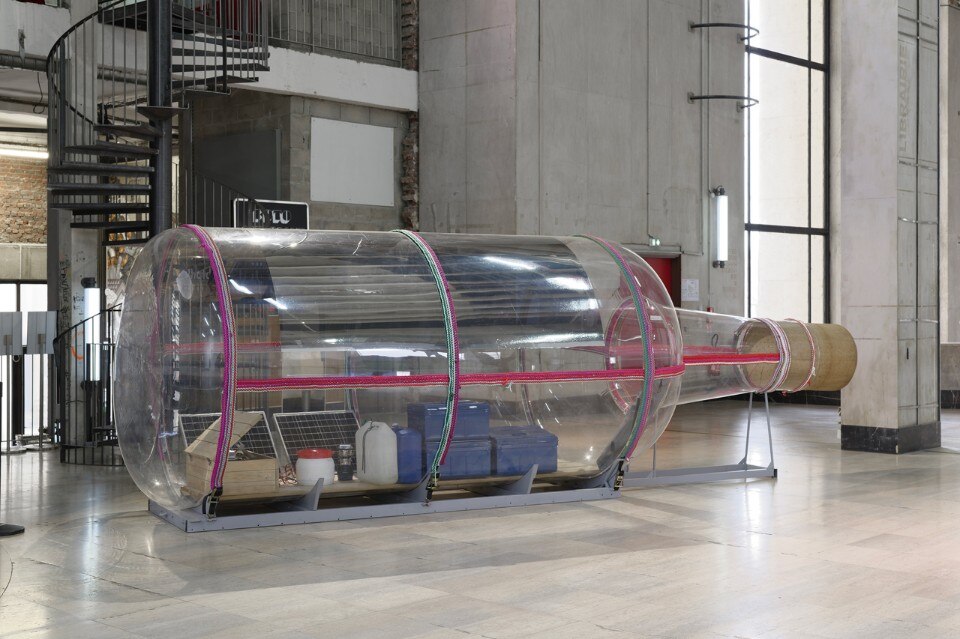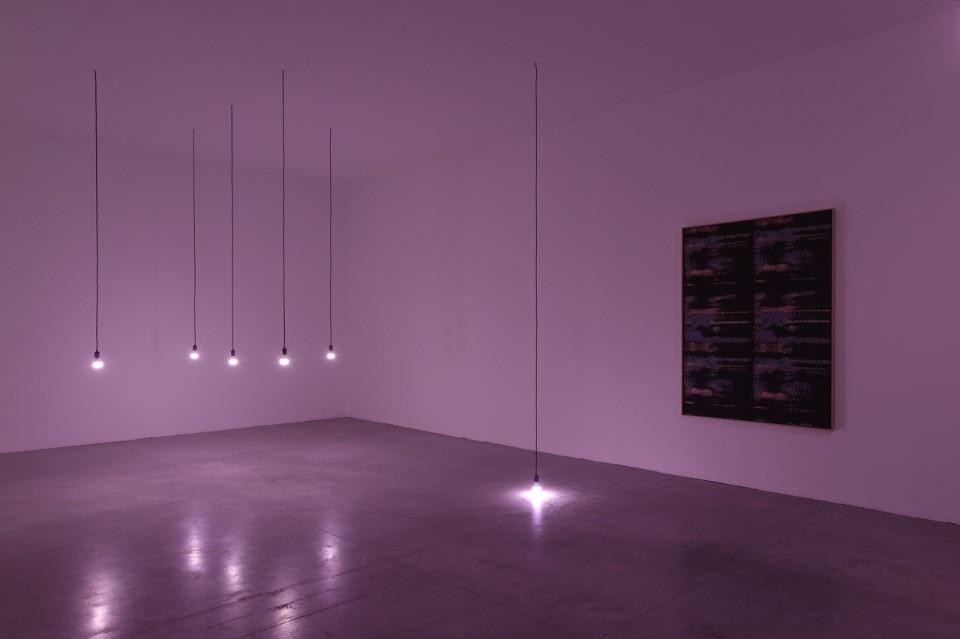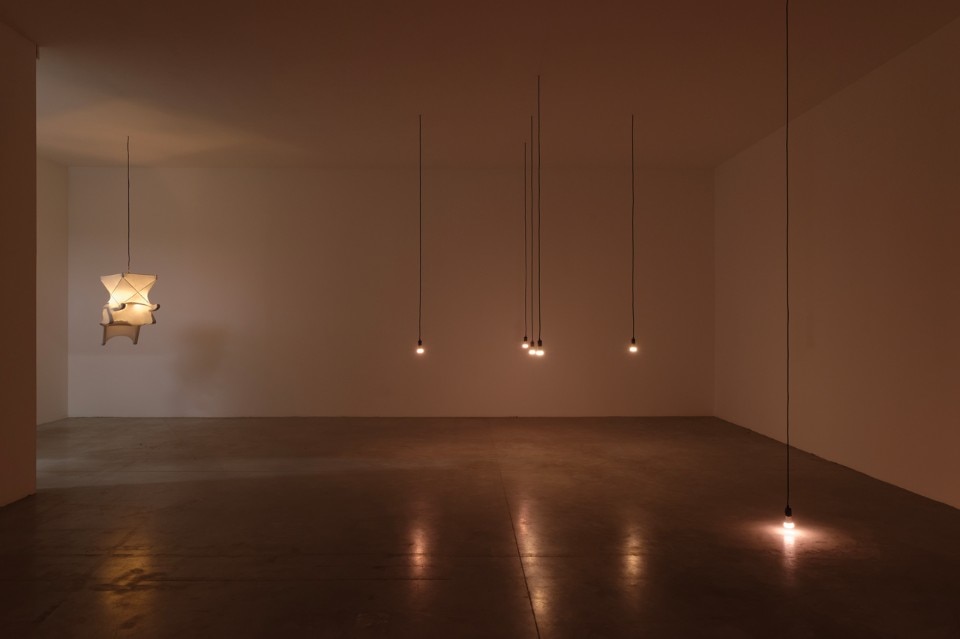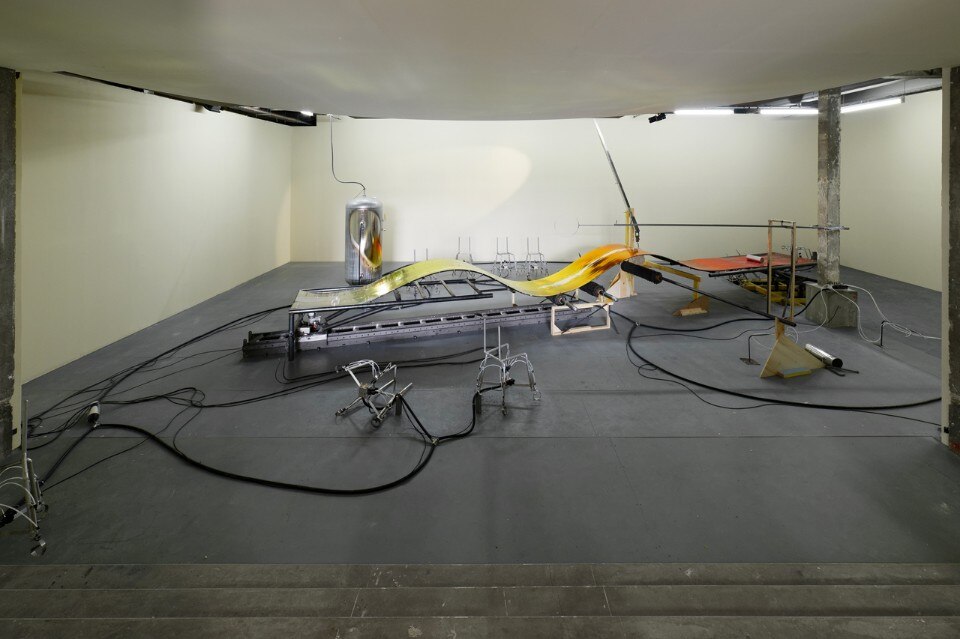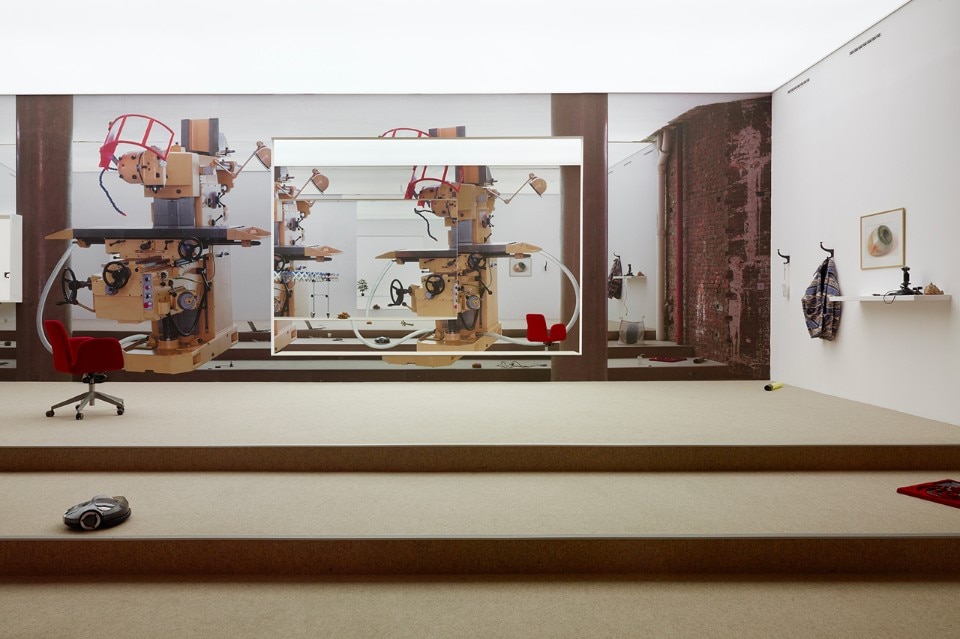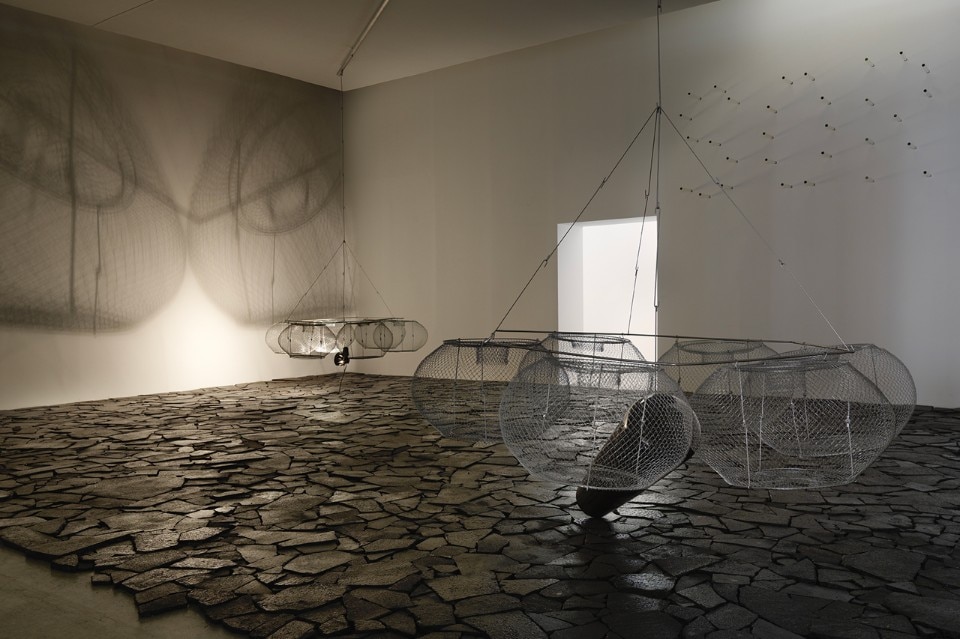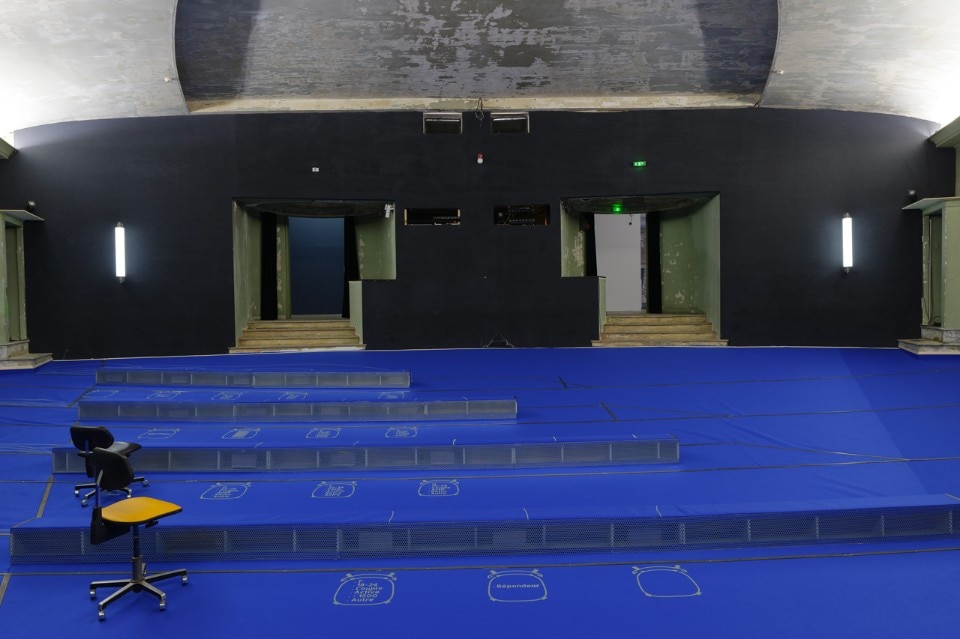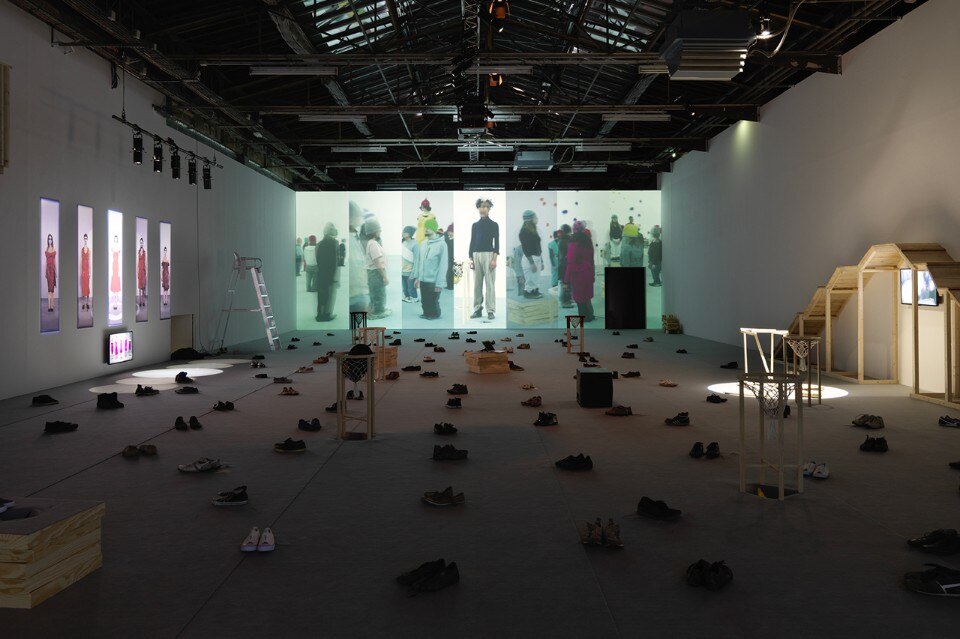
The egg-hatching of Abraham Poincheval – like Dorian Gaudin’s attempt to make a group of chairs climb the stairs – appear as a metaphysical revival of well-known processes. They don’t so much refer to the Duchamp-style political gesture of celibate machines, but rather the reactivation of a convoluted act of seeing. All this is helped along by oversized technologies and shamanic acts of faith. It is a strained return to Dadaism, yet loaded with semantic and ideological manifestations that, a century later, become reassuring techniques, purged as they are of any bold avant-garde temptations. Without particular torments, the object dominates the many chapters of an extensive exhibition in which the cult of the machine reintroduces surrealist sermons or mantras just like in modern-day trade fairs.
This position seems to be deliberately assumed in the installation by Emmanuelle Lainé, titled Where the rubber of our selves meets the road of the wider world. Despite being a freeze-frame of her work on architecture as a mental prosthesis, it is reminiscent of other fortuitous encounters such as the episode with a sewing machine liaising with an umbrella on a dissecting table.
Given that the overall atmosphere is decidedly inspired by a theology of objects, and Lautremont truly seems like the curatorial skeleton in the cupboard, we duly find increasingly perfect sequences of titles. “All Watched Over by Machines of Loving Grace”, for example, is the group-show title taken from a short poem by Richard Brautigan and distributed on the streets of San Francisco in 1967.
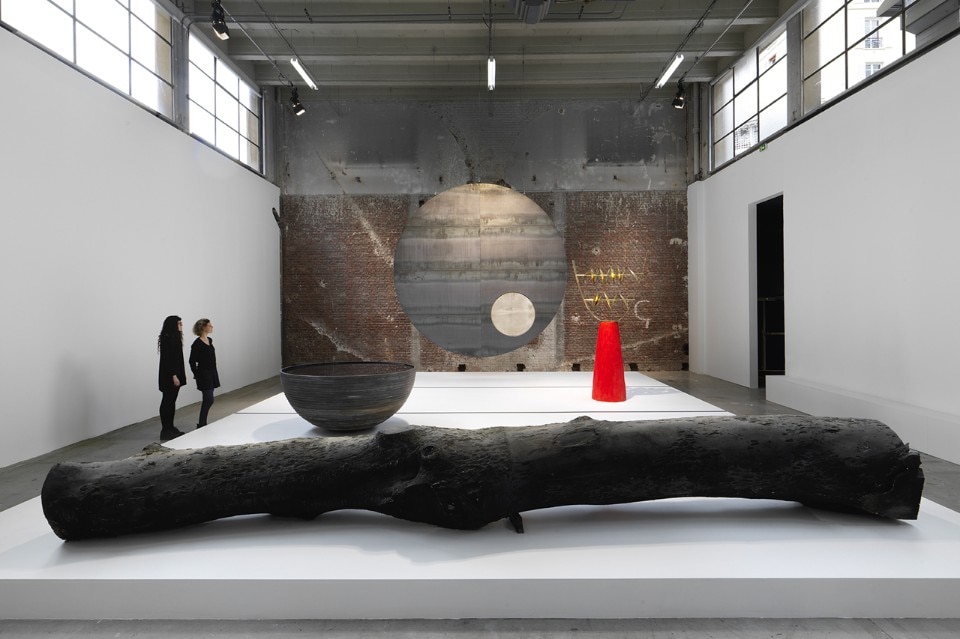
The two artists Taro Izumi and Mel O’Callaghan, who enjoy the support of Sam Art Projects, confront the idea of spectacularity and the productive means needed to underline simple concepts. They appear to lend the season a vibrant heart, a spirit to believe in that qualifies the validity of the whole seasonal project. Taro Izumi chooses the path of parody and has Japanese culture on his side. As in Takeshi Kitano’s less successful films (and there aren’t many), it is humour that disrupts our habits and sets the scale of turbulence in reality. Everything – performance, video, sculpture and nonsense – is mixed with the idea of not emerging from our familiar space, and especially not from the space of an exhibition.
Mel O’Callaghan, meanwhile, opts for the idea of a set, almost as if the contemporary had already forgotten the rituals and undertakings of Matthew Barney. The Australian artist appropriates the perilous acts of bird’s-nest collectors in northeast Borneo. If the body is a possible place of revelation and transcendence, his installation recalls the cleansed scene of much contemporary opera infused with seasonal aestheticism to ensure the survival of timeless music. Simpler actions and practices – such as those of Emmanuel Saulnier in Black Dancing – offer reconciliation with a spatial design that is far more in tune with the scale of these surroundings. What’s missing from the exhibition and many of these works is a poetic exchange between thought and situation. The production of objects ends up erasing the wonderful presence of the silence of things. A small Giorgio Morandi in any room of a museum will have already confronted us with the same problems in decidedly more accessible formats.


